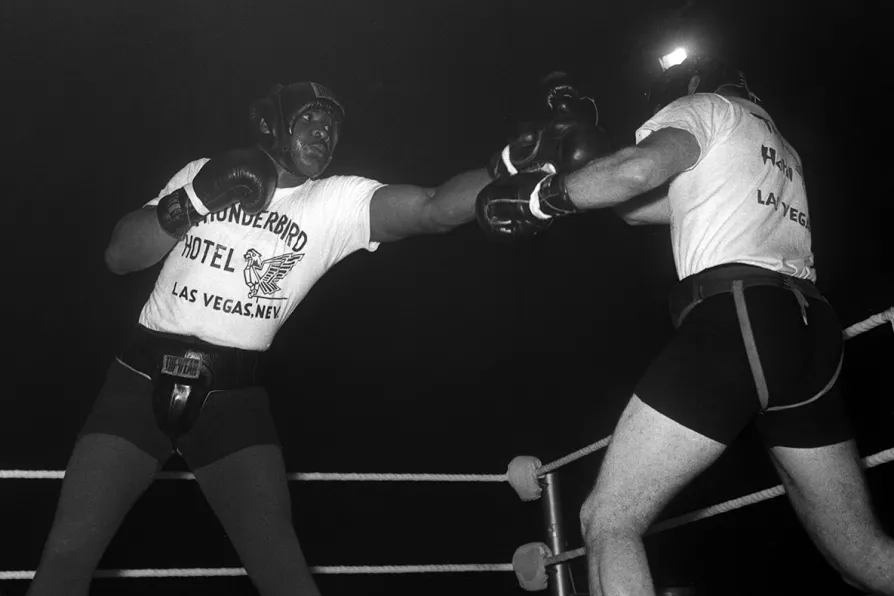
 MISUNDERSTOOD: Sonny Liston (left) takes a shot at a sparring partner in London in 1963
MISUNDERSTOOD: Sonny Liston (left) takes a shot at a sparring partner in London in 1963
TWO of the most disdained and maligned fighters in the history of boxing — Floyd Patterson and Sonny Liston —were also two of the most misunderstood. They met in the ring twice as representatives of two polar opposite strands of black American life in the early sixties – integration and alienation.
Patterson was a poster boy for black integration while Liston stood as a totem of black alienation. Where Patterson was sensitive and shy, Liston was angry and malevolent — this to the point where you could have been forgiven for considering them characters in a morality play rather than competitors for the heavyweight crown.
Their first clash took place on September 25, 1962 at Chicago’s Comiskey Park, home to the city’s famed Chicago White Sox baseball team, in front of 19,000 spectators. Closed circuit television was in its infancy at the time, with this fight one of the first to be aired live around the country using the new technology. Such was the interest in the fight, it was shown at 264 venues across the United States and Canada.

When Patterson and Liston met in the ring in 1962, it was more than a title bout — it was a collision of two black archetypes shaped by white America’s fears and fantasies, writes JOHN WIGHT

JOHN WIGHT tells the riveting story of one of the most controversial fights in the history of boxing and how, ultimately, Ali and Liston were controlled by others












